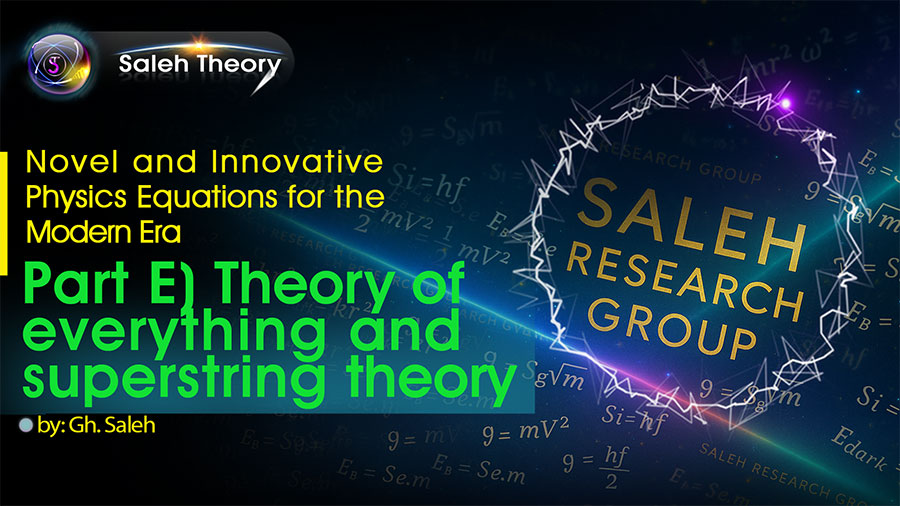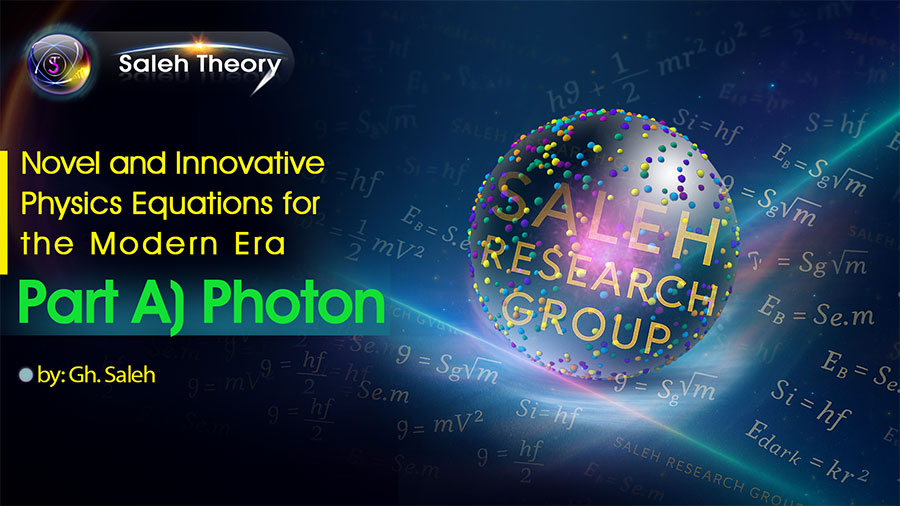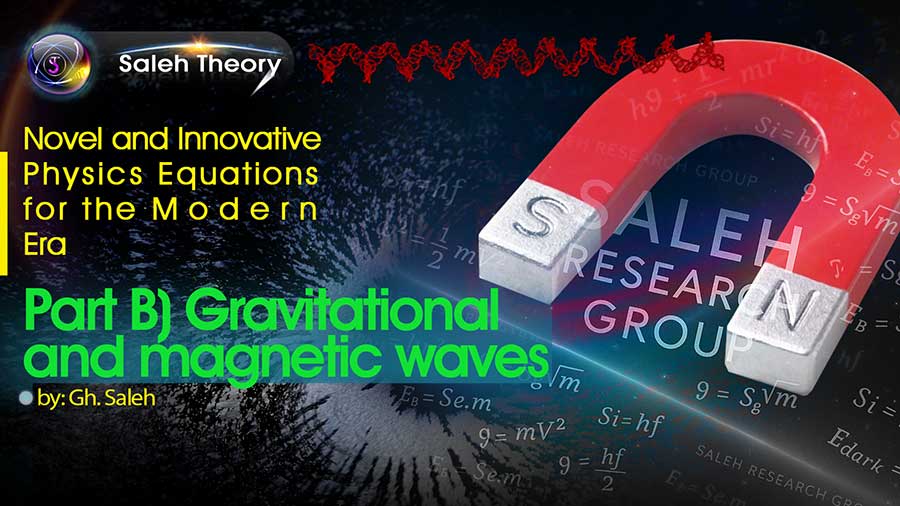
Novel and Innovative Physics Equations for the Modern Era
Part B) Gravitational and magnetic waves
In the modern era of physics, based on the findings of Saleh Theory, it has become possible to revise fundamental concepts such as gravity, magnetism, and the structure of electromagnetic waves on a cosmic scale. In this article, we introduce six new concepts in the field of gravitational and magnetic waves. These concepts were developed using the new computational framework presented by Saleh Theory and could usher in a new era for analysing the behavior of astronomical systems and physical fields in the universe.
1. Gravity frequency of planet to star
In the Saleh theory, gravitational waves are the same chain photons whose source of production is the same as single photons; Stars burning. In other words, the gravitational waves, like single photons, are produced by the stars and scattered into space, but with the difference in the gravitational waves, the photons are chained. These waves are absorbed by the stars and return to the star after a complete cycle and creating a complete moving belt. The result of this dynamic belt is the regular movement of the planet around the central star. Therefore, by the planet's kinetic energy equality with energy -related frequency of gravitational waves, we can calculate the gravitational waves frequency. For the relationship between the planet and the central star in a system, the gravitational frequency is defined in the Saleh theory as follows:
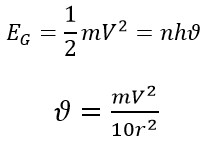
Here, the frequency is directly proportional to the planet's mass and its tangential speed, and inversely proportional to the planet's radius. This frequency can be used to calculate the orbital stability of planets and to study intersystem gravitational waves.
2. Gravity frequency of Star to Central Black Hole
In the Saleh theory, the frequency of the gravity is due to the dynamic interaction between the objects and is a function of mass, distance and radius. But in the interaction between the star and the central black hole of the galaxy, this relationship requires a coefficient as a gravitational constant because due to the distance and numerous numbers of stars, all gravitational lines from the black hole do not pass the star. Therefore, the Gravity Star Frequency equation is defined as the following:

In which “m” is a star mass, “r” is the radius of the star, “V” is the average tangential speed of the star's motion around central black hole of galaxy and “kBS” is gravity coefficient of Saleh theory. This frequency is the result of the stable star movement around the central black hole of the galaxy and can be used to analyze orbital stability and the amount of gravitation energy transfer.
3. Natural Satellite-to-planet gravitational frequency
At the level of planets and natural satellites, this frequency more accurately describes the internal fluctuations in the local gravitational field:

Here too, the natural satellite's mass and speed, as well as its radius, are influential factors, along with the specific gravitational constant of natural satellite to the planet.
4. Gravitational waves energy
According to Saleh theory, any type of gravitational field that produces waves has a specific and calculable frequency. The energy of these waves can be obtained using the following general formula:

Where “EG” is the gravitational wave energy (Joule), “h” is Planck's constant, and “ϑ” is the gravitational frequency of the desired system.
The important point in Saleh theory is that this energy is of such a quantity and frequency that it enables the engineered use of gravitational energy in future applications.
5. The frequency of magnetic waves
According to the Saleh theory’s point of view, every ordinary magnet has its own frequency, as it possesses a magnetic field produced by magnetic waves moving around it, so like gravitational waves, it has its own frequency, and this frequency can be calculated with the following method.
By placing the two similar poles of the two magnets in front of each other (vertically) and measuring the distance between them and comparing this distance with the gravitational potential energy, we can write the following formula, indicating the magnet frequency dependence on the mass of the magnet:
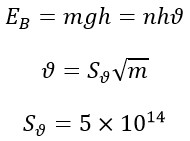
Where “ϑ” is the frequency of the magnetic wave (Hz), “Sϑ” is the Saleh magnetic constant, and “m” is the mass of the magnet in grams. The fundamental point is that in Saleh theory, the magnetic field, like the gravitational field, is composed of chain photons, except that it has a lower frequency.
6. Energy of Magnetic Waves
Continuing from the previous section, the energy of magnetic waves is also dependent on their frequency. Therefore, the equivalent energy of magnetic waves is also calculated as follows:

Where “Se” is the magnetic wave energy constant and “m” is the mass of the magnet
References:
[1] Saleh, Gh. "Novel Gravitational Frequency Calculation and Its 10 Applications in Industry." Saleh Theory, 12 Jul. 2025, https://saleh-theory.com/article/novel-gravitational-frequency-calculation-and-its-10-applications-in-industry
[2] Saleh, Gh. " Calculation of Gravitational Wave Frequency in the Universe." Saleh Theory, 08 Jun. 2025, https://saleh-theory.com/article/calculation-of-gravitational-wave-frequency-in-the-universe
[7] Saleh, Gh. "Magnetic-Gravity." TEXAS symposium 2024. 2024.
[9] Saleh, Gh. "New and Fundamental Discoveries About Gravity." APS Meeting Abstracts. 2023.
[14] Saleh, Gh. "New Marvelous and Revolutionary Discoveries About Gravity." Saleh Theory, 08 Nov. 2023, https://www.saleh-theory.com/article/new-marvelous-and-revolutionary-discoveries-about-gravity
[16] Saleh, Gh. "New Discoveries About Gravity?!!! 2." Saleh Theory, 12 Dec. 2021, https://www.saleh-theory.com/article/new-discoveries-about-gravity-2
[17] Saleh, Gh. "New Discoveries About Gravity?!!!." Saleh Theory, 07 Nov. 2021, https://www.saleh-theory.com/article/new-discoveries-about-gravity
 Download PDF
Download PDF 
